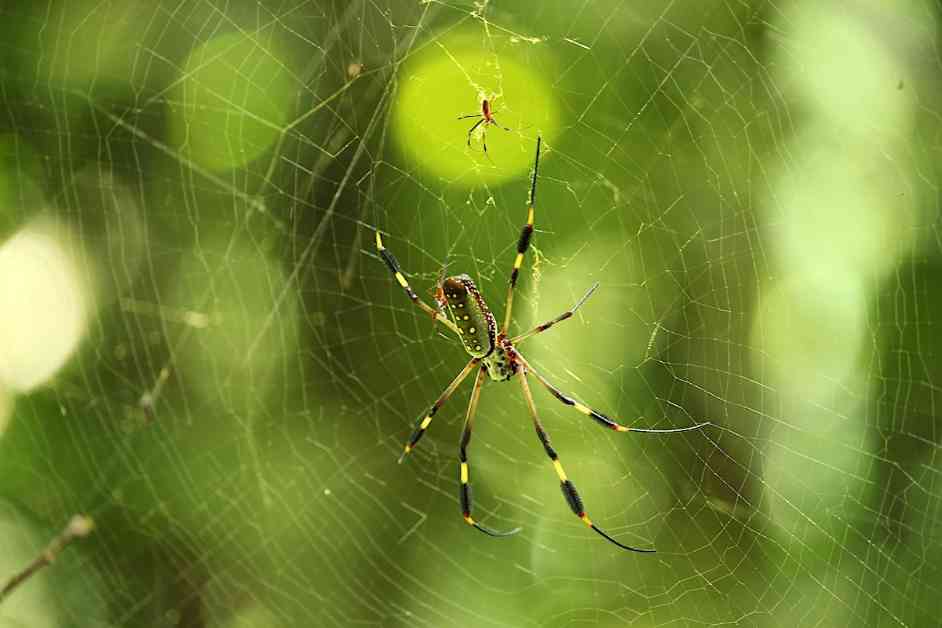**How Spiders ‘Smell’ Using Their Legs: EcoWatch Research Study**
Most spiders have eight legs, no ears, and use fine leg hairs connected to nerve cells or their webs to hear sounds in their environment. But have you ever wondered how they smell? A groundbreaking new study conducted by an international team of researchers has shed light on this mystery, revealing that male spiders actually “smell” with their legs using olfactory hairs known as wall-pore sensilla as their “nose” to detect sex pheromones released by females.
**The Discovery**
The discovery, detailed in the study titled “Olfaction with legs — Spiders use wall-pore sensilla for pheromone detection,” published in the journal Proceedings of the National Academy of Sciences, came after a decade of rigorous research and investigation. The team, led by researcher Dan-Dan Zhang from Lund University, identified and mapped the sensilla, unraveling the long-standing mystery of how spiders detect scents.
Through high-resolution electron microscopy, the researchers examined female and male A. bruennichi spiders and found that all male spiders’ walking legs were equipped with thousands of wall-pore sensilla. These sensilla, distinct from those of insects and other arthropods, are found on the upper region of the legs of male spiders, close to the body, in areas that rarely come into contact with surfaces during activities like walking, mating, or capturing prey.
**The Sensilla Experiment**
To test the sensitivity of the spiders’ olfactory sensilla, the researchers exposed them to a pheromone compound, observing a clear response in neuronal cells from the wall-pore sensilla. Even a tiny amount of the pheromone compound was enough to elicit a burst of activity in the sensilla, with the response becoming stronger as the dose increased. This demonstrated that spiders’ olfactory sensilla are highly sensitive, enabling males to detect even faint traces of airborne sex pheromones.
**Implications and Future Research**
The team’s findings not only provide a deeper understanding of how spiders perceive the world through olfaction but also raise intriguing questions for future research. How do female spiders smell without wall-pore sensilla? What other chemicals can spiders detect, and how do these affect their behavior and ecology? What is the molecular and neural basis of spiders’ olfaction, and how has the sense of smell evolved across different spider species?
As we delve deeper into the fascinating world of spider biology, these questions set the stage for an exciting new chapter in our understanding of these remarkable creatures.
—
As a child, I was always fascinated by spiders, their intricate webs, and mysterious behaviors. Reading about this study that uncovers the secret behind how spiders ‘smell’ with their legs brings a new level of appreciation for these incredible arachnids. It’s amazing to think about the hidden abilities of these creatures that have coexisted with humans for centuries. This research not only sheds light on a long-standing mystery but also opens the door to a world of possibilities in understanding spider biology and behavior. Next time you see a spider, take a moment to marvel at the complexity of nature’s creations and the wonders that lie beneath their tiny legs.














